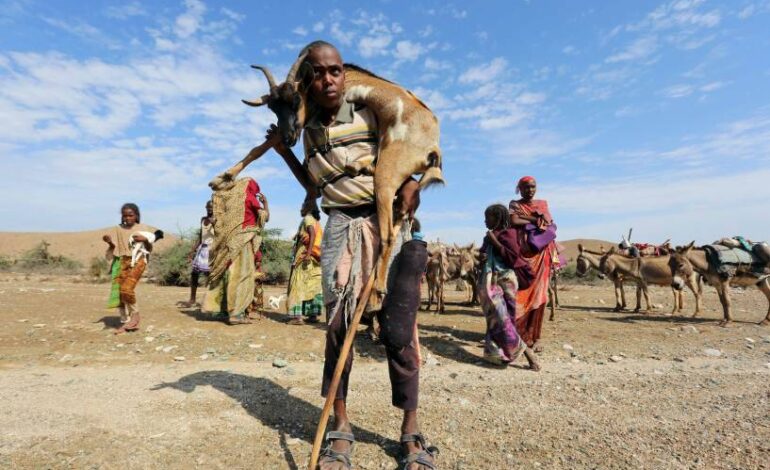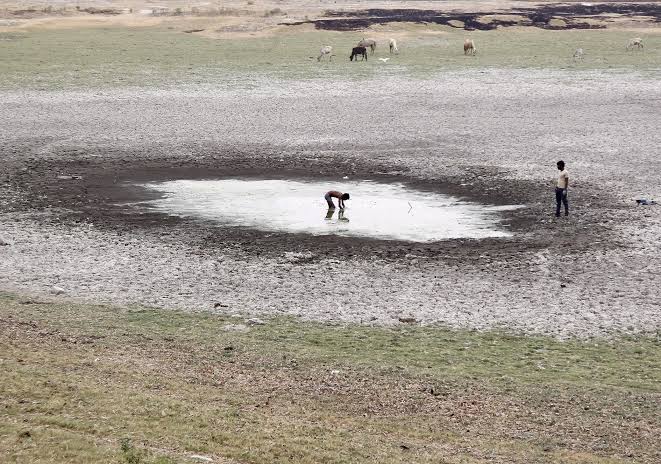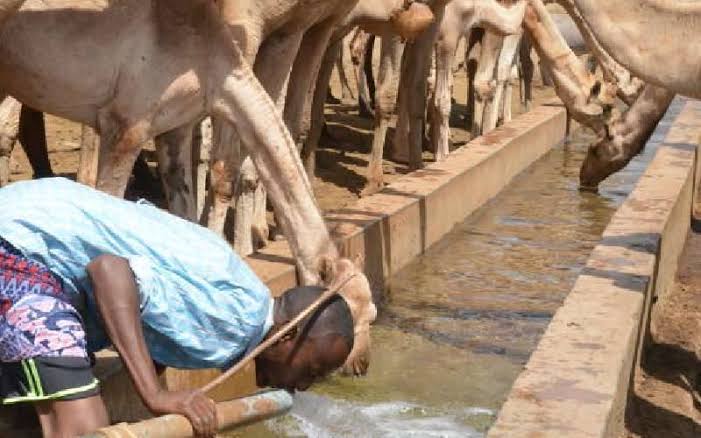
Faith Nyasuguta
About 3.5 million Kenyans are in dire need of food assistance following an excruciating drought last seen four decades ago, according to an Intergovernmental Authority on Development (IGAD) report.
The report comes against the backdrop of a forecast of poor March to May long rains indicating that the food situation can only get worse.
In 2021’s October to December rainy season, rainfall levels in northern Kenya’s arid and semi-arid areas were 26-50 per cent lower than anticipated.
According to IGAD, Kenya, Ethiopia and Somalia will bear the harshest brunt of the drought crisis, says
In Kenya, the arid and semi-arid lands are the worst hit, with the country having suffered a 70 percent drop in crop production.

Most parts of the East African nation have experienced little or no rainfall since 2020 and this will be the fourth season in a row that the rains will be failing to meet traditional expectations.
In Turkana, Kenya’s largest county, a whopping 80-90 percent of water reservoirs, including dams, have dried up.
The UN’s Office for the Coordination of Humanitarian Affairs (OCHA) says that over 90 per cent of open water sources in Kenya’s arid and semi-arid lands have dried up. The remaining ones are projected to last only between one and two months.
OCHA cautions that the lakeside communities dwelling in Turkana cannot continue to survive on fishing.
For months, calls have been on the rise for an emergency response to support pastoralists and residents of northern Kenyan counties staring at starvation.
The dry conditions have also pushed hundreds of wildlife from their natural habitat into private farms, searching for water and pasture.
The Kenya Meteorological Department (KMD) has already cautioned poor distribution of rainfall for the remainder of the March to May rainy season, attributing the eventuality to low pressure over the southern hemisphere and the high pressure over the northern hemisphere which has made it unfavourable for the country to receive rains.
In September last year, the Kenyan government declared the persistent drought a national disaster and released Sh 2b ($17.36m) under the National Drought Emergency Fund in response to the situation.
OCHA, however, notes that the flow of the funds has been slow to reach the areas it is needed most.
Observing that this season’s rains play a key role for the IGAD region, Executive Secretary Workneh Gebeyehu expressed fears that additional stress factors that have recently hit the region, including the Covid-19 pandemic and the Ukraine-Russia conflict, could acutely raise food insecurity levels across the Horn of Africa.

“The MAM [March to May] rains are crucial for the region and sadly, we are looking at not just three, but potentially four consecutive failed seasons. This, coupled with other stress factors such as conflicts in both our region and Europe, the impact of Covid-19, and macro-economic challenges, has led to acute levels of food insecurity across the Greater Horn of Africa,” said Dr Gebeyehu.
The Food Security and Nutrition Working Group co-chaired by IGAD and UN’s Food and Agriculture Organization (FAO) says that over 29 million people are facing high levels of food insecurity across the IGAD region.
“Already, 15.5 to 16 million of our brothers and sisters and brothers are in need of immediate food assistance due to the drought. This is 6.0 to 6.5 million in Ethiopia, 3.5 million in Kenya and 6 million in Somalia,” stated Gebeyehu.
“In the southern-central part of Somalia, the situation is catastrophic, with 81,000 people at risk of famine.”
IGAD’s Climate Prediction and Applications Centre (ICPAC) notes that the first month of the March to May season was particularly dry, with the region recording higher temperatures and less than normal rainfall.
In recent days, several counties in Kenya have appealed to the national government and other development partners for help.
In a bid to avert the looming humanitarian crisis across the three drought-affected countries, the World Food Programme (WFP) has launched a food and nutrition assistance scheme dubbed the Regional Drought Response Plan for the Horn of Africa to aid the affected communities.
This is in addition to cash grants and insurance deals that are helping families to buy food for livestock.

The programme is calling for $327 million to meet the immediate wants of over 4.5 million people in the next six months, a move that will help communities build resilience to the looming climate shocks.
You may also like:




